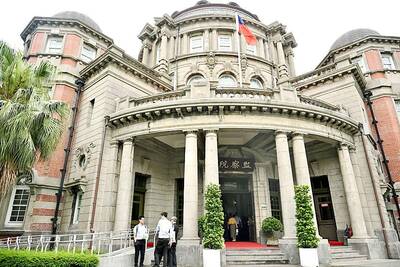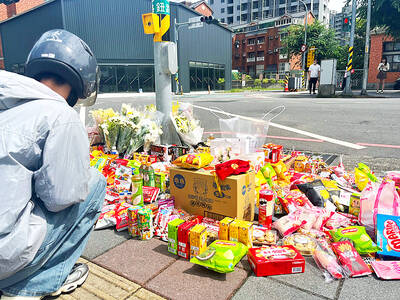PLANNING AHEAD
Prepare a home earthquake plan. Choose a safe place in every room -- under a sturdy table or desk or against an inside wall where nothing can fall on you. Practice "Drop, Cover, and Hold on" at least twice a year. Drop under a sturdy desk or table, hold on, and protect your eyes by pressing your face against your arm. If there's no table or desk nearby, sit on the floor against an interior wall away from windows, bookcases, or tall furniture that could fall on you.
Prepare a disaster supplies kit for home and car. This should include a first aid kit and essential medications and:
* Canned food and can opener.
* At least three gallons of water per person.
* Protective clothing, rainwear, and bedding or sleeping bags.
* Battery-powered radio, flashlight, and extra batteries.
* Special items for infant, elderly, or disabled family members.
* Written instructions for how to turn off gas, electricity, and water if authorities advise you to do so.
TIPS FOR PREPARING CHILDREN
Children need to be prepared for an earthquake as much as adults, if not more so.
For infants and toddlers, special emphasis should be placed on making their environment as safe as possible. Cribs should be placed away from windows and tall, unsecured bookcases and shelves that could slide or topple.
A minimum of a 72-hour supply of extra water, formula, bottles, food, juices, clothing, disposable diapers, baby wipes and prescribed medications should be stored where it is most likely to be accessible after an earthquake. Also keep an extra diaper bag with these items in your car.
Install bumper pads in cribs or bassinettes to protect babies during the shaking. Also install latches on all cupboards (not just those young that children can reach) so that nothing can fall on your baby during a quake.
For preschool and school-age children, parents should take a more inclusive approach. By age three or so, children can understand what an earthquake is and how to get ready for one. Take the time to explain what causes earthquakes in terms they'll understand.
Include your children in family discussions and planning for earthquake safety. Conduct drills and review safety procedures every six months.
Show children the safest places to be in each room when an earthquake hits. Also show them all possible exits from each room.
Use sturdy tables to teach children to Drop, Cover and Hold and teach them what to do wherever they are during an earthquake (at school, in a tall building, outdoors). Make sure children's emergency cards at school are up-to-date. Although children should not turn off any utility valves, it's important that they know what gas smells like. Advise children to tell an adult if they smell gas after an earthquake.
DECREASING THE DANGER
There are several ways to eliminate hazards in the home to reduce the risk of injury during a major quake.
1) Bolt bookcases, china cabinets, and other tall furniture to wall studs or secure them with molley bolts into cement walls.
2) Use child-proof latches, hook and eye latches or positive catch latches, designed for boats, to secure your cabinet doors. Make sure your gas appliances have flexible connectors to reduce the risk of fire and secure your refrigerator to prevent movement. Strap the water heater to the wall.
3) Secure tabletop objects such as TVs, stereos, computers, lamps and chinaware with buckles and safety straps that can be attached to the tabletop (which allows for easy movement of the units when needed) or with hook and loop fasteners glued to both the table and the unit. Glass and pottery objects can be secured with nondrying putty or microcrystalline wax.
4) Framed pictures, especially glass-covered, should be hung from closed hooks so that they can't bounce off. Only soft art such as tapestries should be placed over beds and sofas. Secure overhead objects like ceiling lights and fans with a cable bolted to the ceiling joist. The cable should have enough slack to allow it to sway.
KNOW WHAT TO EXPECT (AND WHAT TO DO)
Naturally, different people will react in different ways to a major earthquake. Universally, though, some degree of confusion and panic strikes during the quake, making it difficult to think about what to do. That's why it's important to drill yourself before the next earthquake, so habit can overcome fear.
If you're indoors ...
Drop, cover, and hold. If you are not near a desk or table, drop to the floor against an interior wall and protect your head and neck with your arms. The area near the exterior walls of a building is the most dangerous place so avoid them as well as windows, hanging objects, mirrors, and tall furniture.
Stay inside if you are inside and outside if you are outside. If you are in bed, hold on and stay there, protecting your head with a pillow. Do not try to run outside or to another room -- severe shaking will make it difficult to move. Duck, cover, and hold -- wherever you are. Remember that doorways are no safer than elsewhere in the home. If your building actually begins to collapse, you are safest under a sturdy piece of furniture that can shield you from falling debris.
In a high-rise ...
Duck, cover, and hold. Do not use elevators. Do not be surprised if sprinkler systems or fire alarms activate.
Outdoors ...
Move to a clear area if you can safely do so; avoid power lines, trees, signs, buildings, vehicles, and other hazards. If necessary, duck into a doorway to protect yourself from falling bricks, glass, plaster and other debris.
If you're driving ...
Pull over to the side of the road, stop, and set the parking brake. Avoid overpasses, bridges, power lines, signs, and other hazards. Stay inside the vehicle until the shaking is over. If a power line falls on the car, stay inside until a trained person removes the wire.
COMMUNICATION
Establish an out-of-area contact person who can be called by all family members to relay information. In an emergency, out-of-area calls are often easier to place than local calls. Use the telephone only to report life-threatening emergencies.
Sources: California Governor's Office for Earthquake Preparedness; American Red Cross; USGS.

Nvidia Corp yesterday unveiled its new high-speed interconnect technology, NVLink Fusion, with Taiwanese application-specific IC (ASIC) designers Alchip Technologies Ltd (世芯) and MediaTek Inc (聯發科) among the first to adopt the technology to help build semi-custom artificial intelligence (AI) infrastructure for hyperscalers. Nvidia has opened its technology to outside users, as hyperscalers and cloud service providers are building their own cost-effective AI chips, or accelerators, used in AI servers by leveraging ASIC firms’ designing capabilities to reduce their dependence on Nvidia. Previously, NVLink technology was only available for Nvidia’s own AI platform. “NVLink Fusion opens Nvidia’s AI platform and rich ecosystem for

WARNING: From Jan. 1 last year to the end of last month, 89 Taiwanese have gone missing or been detained in China, the MAC said, urging people to carefully consider travel to China Lax enforcement had made virtually moot regulations banning civil servants from making unauthorized visits to China, the Control Yuan said yesterday. Several agencies allowed personnel to travel to China after they submitted explanations for the trip written using artificial intelligence or provided no reason at all, the Control Yuan said in a statement, following an investigation headed by Control Yuan member Lin Wen-cheng (林文程). The probe identified 318 civil servants who traveled to China without permission in the past 10 years, but the true number could be close to 1,000, the Control Yuan said. The public employees investigated were not engaged in national

ALL TOGETHER: Only by including Taiwan can the WHA fully exemplify its commitment to ‘One World for Health,’ the representative offices of eight nations in Taiwan said The representative offices in Taiwan of eight nations yesterday issued a joint statement reiterating their support for Taiwan’s meaningful engagement with the WHO and for Taipei’s participation as an observer at the World Health Assembly (WHA). The joint statement came as Taiwan has not received an invitation to this year’s WHA, which started yesterday and runs until Tuesday next week. This year’s meeting of the decisionmaking body of the WHO in Geneva, Switzerland, would be the ninth consecutive year Taiwan has been excluded. The eight offices, which reaffirmed their support for Taiwan, are the British Office Taipei, the Australian Office Taipei, the

DANGEROUS DRIVERS: The proposal follows a fatal incident on Monday involving a 78-year-old driver, which killed three people and injured 12 The Ministry of Transportation and Communications yesterday said it would lower the age for elderly drivers to renew their license from 75 to 70 as part of efforts to address safety issues caused by senior motorists. The new policy was proposed in light of a deadly incident on Monday in New Taipei City’s Sansia District (三峽), in which a 78-year-old motorist surnamed Yu (余) sped through a school zone, killing three people and injuring 12. Last night, another driver sped down a street in Tainan’s Yuching District (玉井), killing one pedestrian and injuring two. The incidents have sparked public discussion over whether seniors